What is the advantage of using TensorFlow Privacy over modifying the model architecture or training procedures?
TensorFlow Privacy is a powerful tool in the field of machine learning that provides several advantages over modifying the model architecture or training procedures. By incorporating privacy-preserving mechanisms directly into the training process, TensorFlow Privacy enables the development of models that can protect sensitive information while still maintaining high levels of accuracy and utility.
One of the key advantages of using TensorFlow Privacy is its ability to provide rigorous privacy guarantees. Traditional methods of modifying the model architecture or training procedures may offer some level of privacy, but they often lack formal guarantees or can be vulnerable to privacy attacks. TensorFlow Privacy, on the other hand, implements state-of-the-art privacy techniques such as differential privacy, which provides a strong mathematical framework for quantifying and controlling the privacy risks associated with machine learning models.
Differential privacy ensures that the presence or absence of an individual's data does not significantly impact the model's output or the privacy of that individual. By adding carefully calibrated noise to the training process, TensorFlow Privacy can achieve this privacy guarantee. This means that even if an adversary has access to the model's parameters and training data, they will not be able to infer sensitive information about any individual in the training dataset.
Another advantage of TensorFlow Privacy is its ease of use and compatibility with existing TensorFlow workflows. By providing a set of privacy-preserving optimizers and utilities, TensorFlow Privacy allows developers to seamlessly integrate privacy into their existing machine learning pipelines. This makes it easier to adopt privacy-preserving techniques without requiring significant modifications to the model architecture or training procedures.
Furthermore, TensorFlow Privacy provides fine-grained control over the privacy-utility trade-off. Different privacy mechanisms can be applied with varying levels of noise, allowing developers to strike a balance between privacy and model accuracy. This flexibility enables the development of models that can meet specific privacy requirements while still achieving high levels of utility.
To illustrate the advantages of TensorFlow Privacy, consider a scenario where a healthcare organization wants to develop a machine learning model for predicting disease outcomes. The organization needs to ensure that the model protects the privacy of patients' medical records. By using TensorFlow Privacy, the organization can train a model that incorporates differential privacy techniques, guaranteeing that the model does not reveal sensitive information about individual patients. This level of privacy assurance would be challenging to achieve by simply modifying the model architecture or training procedures.
TensorFlow Privacy offers several advantages over modifying the model architecture or training procedures. It provides rigorous privacy guarantees, ease of use, compatibility with existing TensorFlow workflows, and fine-grained control over the privacy-utility trade-off. By incorporating privacy-preserving mechanisms directly into the training process, TensorFlow Privacy enables the development of models that can protect sensitive information while still maintaining high levels of accuracy and utility.
Other recent questions and answers regarding EITC/AI/GCML Google Cloud Machine Learning:
- What are the different types of machine learning?
- Should separate data be used in subsequent steps of training a machine learning model?
- What is the meaning of the term serverless prediction at scale?
- What will hapen if the test sample is 90% while evaluation or predictive sample is 10%?
- What is an evaluation metric?
- What are algorithm’s hyperparameters?
- How to best summarize what is TensorFlow?
- What is the difference between hyperparameters and model parameters?
- What does hyperparameter tuning mean?
- What is text to speech (TTS) and how it works with AI?
View more questions and answers in EITC/AI/GCML Google Cloud Machine Learning

